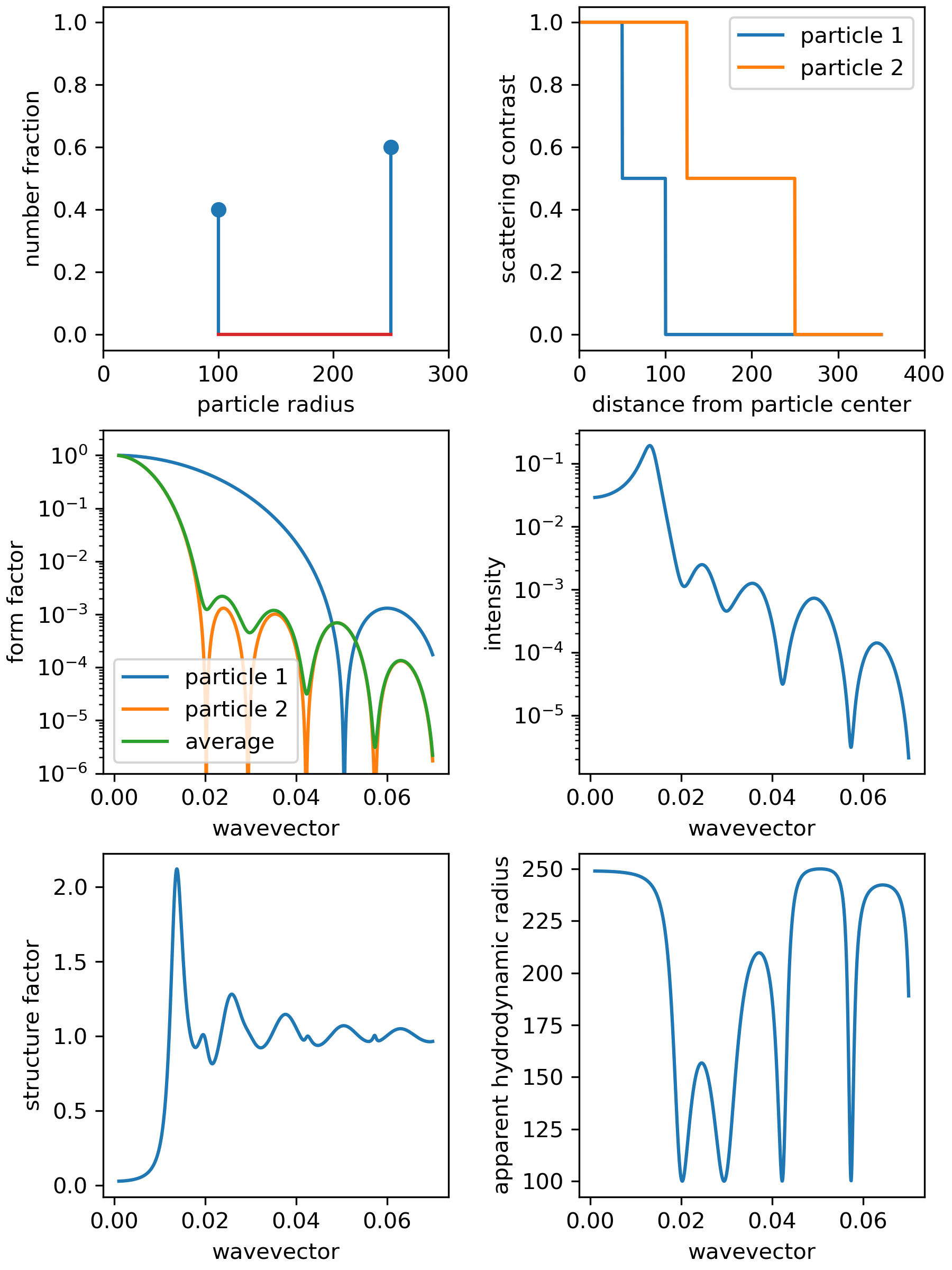
Security News
Fluent Assertions Faces Backlash After Abandoning Open Source Licensing
Fluent Assertions is facing backlash after dropping the Apache license for a commercial model, leaving users blindsided and questioning contributor rights.
A versatile tool for calculating scattering functions of particle mixtures, particularly for small-angle scattering (SAS) or static and dynamic light scattering (SLS & DLS) applications.
mixscatter is a pure python package for the calculation of scattering functions of multi-component mixtures of interacting spherical scatterers in the Born approximation (Rayleigh-Gans-Debye scattering).
Key Features:
Take a look at these publications if you are interested:
mixscatter is available on the Python Package Index (PyPI).
Ensure you have Python 3.10 or higher installed.
Install the package via pip:
pip install mixscatter
The source code is currently hosted on GitHub at: https://github.com/joelmaier/mixscatter
Find the documentation on GitHub Pages: https://joelmaier.github.io/mixscatter/
This example demonstrates the fundamental capabilities of mixscatter. For a comprehensive walk-through, refer to the Getting Started Guide.
Run this code to produce the figure below.
import numpy as np
import matplotlib.pyplot as plt
from mixscatter.mixture import Mixture
from mixscatter.scatteringmodel import SimpleCoreShell
from mixscatter.liquidstructure import PercusYevick
from mixscatter import (
measurable_intensity,
measurable_structure_factor,
measurable_diffusion_coefficient
)
if __name__ == "__main__":
plt.ion()
plt.close("all")
fig, ax = plt.subplots(3, 2, figsize=(6, 8), layout="constrained")
# Initialize a particle mixture
mixture = Mixture(radius=[100, 250], number_fraction=[0.4, 0.6])
# Visualize mixture composition
ax[0, 0].stem(mixture.radius, mixture.number_fraction)
ax[0, 0].set_xlim(0, 300)
ax[0, 0].set_ylim(-0.05, 1.05)
ax[0, 0].set_xlabel("particle radius")
ax[0, 0].set_ylabel("number fraction")
# Provide a model for the optical properties of the system
wavevector = np.linspace(1e-3, 7e-2, 1000)
scattering_model = SimpleCoreShell(
wavevector=wavevector,
mixture=mixture,
core_to_total_ratio=0.5,
core_contrast=1.0,
shell_contrast=0.5
)
# Visualize SLD profile
distance = np.linspace(0, 350, 1000)
for i, particle in enumerate(scattering_model.particles):
profile = particle.get_profile(distance)
ax[0, 1].plot(distance, profile, label=f"particle {i + 1}")
ax[0, 1].set_xlim(0, 400)
ax[0, 1].set_xlabel("distance from particle center")
ax[0, 1].set_ylabel("scattering contrast")
ax[0, 1].legend()
# Visualize individual and average form factor(s)
for i, form_factor in enumerate(scattering_model.single_form_factor):
ax[1, 0].plot(wavevector, form_factor, label=f"particle {i + 1}")
ax[1, 0].plot(
wavevector, scattering_model.average_form_factor, label="average"
)
ax[1, 0].set_yscale("log")
ax[1, 0].set_ylim(1e-6, 3e0)
ax[1, 0].legend()
ax[1, 0].set_xlabel("wavevector")
ax[1, 0].set_ylabel("form factor")
# Provide a model for the liquid structure
liquid_structure = PercusYevick(
wavevector=wavevector, mixture=mixture, volume_fraction_total=0.45
)
# Calculate the scattered intensity of the system
intensity = measurable_intensity(liquid_structure, scattering_model)
ax[1, 1].plot(wavevector, intensity)
ax[1, 1].set_yscale("log")
ax[1, 1].set_xlabel("wavevector")
ax[1, 1].set_ylabel("intensity")
# Calculate the experimentally obtainable, measurable structure factor
structure_factor = measurable_structure_factor(
liquid_structure, scattering_model
)
ax[2, 0].plot(wavevector, structure_factor)
ax[2, 0].set_xlabel("wavevector")
ax[2, 0].set_ylabel("structure factor")
# Calculate the effective Stokes-Einstein diffusion coefficient
# which would be obtained from a cumulant analysis in
# dynamic light scattering
diffusion_coefficient = measurable_diffusion_coefficient(
scattering_model, thermal_energy=1.0, viscosity=1.0 / (6.0 * np.pi)
)
# Visualize the apparent hydrodynamic radius, which is
# proportional to 1/diffusion_coefficient
ax[2, 1].plot(wavevector, 1 / diffusion_coefficient)
ax[2, 1].set_xlabel("wavevector")
ax[2, 1].set_ylabel("apparent hydrodynamic radius")
fig.savefig("simple_example_figure.png", dpi=300)

Contributions are welcome! If you find any bugs or want to request features, feel free to get in touch or create an issue.
This project is licensed under the MIT License - see the LICENSE file for details.
FAQs
A versatile tool for calculating scattering functions of particle mixtures, particularly for small-angle scattering (SAS) or static and dynamic light scattering (SLS & DLS) applications.
We found that mixscatter demonstrated a healthy version release cadence and project activity because the last version was released less than a year ago. It has 1 open source maintainer collaborating on the project.
Did you know?

Socket for GitHub automatically highlights issues in each pull request and monitors the health of all your open source dependencies. Discover the contents of your packages and block harmful activity before you install or update your dependencies.

Security News
Fluent Assertions is facing backlash after dropping the Apache license for a commercial model, leaving users blindsided and questioning contributor rights.

Research
Security News
Socket researchers uncover the risks of a malicious Python package targeting Discord developers.

Security News
The UK is proposing a bold ban on ransomware payments by public entities to disrupt cybercrime, protect critical services, and lead global cybersecurity efforts.